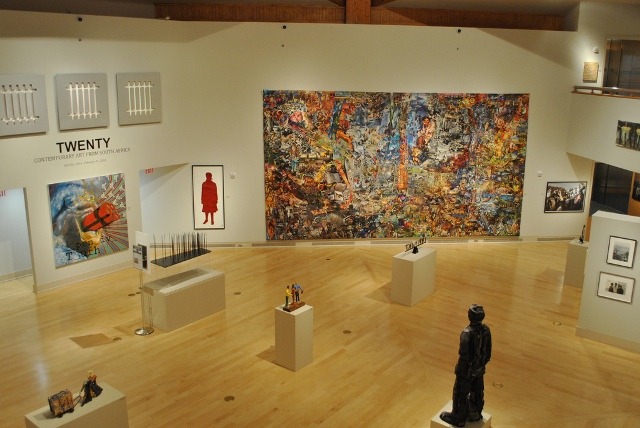EMIT
Collage created from Time Magazine images.
9/12/20243 min read


The Story
At the moment of his daughter’s birth, Gavin experienced something extraordinary. As the bright light overwhelmed her tiny eyes, he instinctively shielded her with his hand. In that fleeting instant, as he gazed deeply into her eyes, the entire world disappeared. Instead, he was transported into a comforting, infinite universe—a loving space beyond earth that he felt had given birth to his daughter. Though the midwives were visibly impressed by the almost unexplainable connection, to Gavin it felt like a natural, everyday occurrence: an affirmation of the ancient teaching that “what is within is without.”
This early spiritual encounter became the cornerstone of his creative journey. In time, Gavin would transform his intense inner vision into art—a colossal collage named “Emit.” Crafted entirely from donated TIME magazine images, the piece was both an exploration of his inner landscape and a critique of the external world. For him, the word “Emit” held profound meaning. When time is reversed, it spells “emit,” evoking the idea of energy, light, and even the painful discharge of emotions. Gavin felt that something essential had been stolen from him and his daughter—a fragment of time and identity that society had denied them. Yet, deep within, a quiet teacher revealed that time, as we understand it, does not exist.
Gavin’s journey was further darkened by tragedy. At the age of three, his daughter was abducted—torn away from him because of prejudices surrounding gender and parental roles. The loss was overwhelming. Living in a remote forest village atop a mountain, he found himself isolated, grappling with the constant, searing pain of her absence. His mind was tormented by frantic thoughts, his heart echoing the silent screams of countless innocents. Even as Interpol and the police scoured for her, he could only watch in anguish as time seemed to collapse into one endless, excruciating moment.
Determined to find meaning in the midst of chaos, Gavin embraced a rigorous daily routine. Walking meditations of eight to five hours became his sanctuary—a slow, deliberate journey that helped quiet his racing mind. He immersed himself in the wisdom of the Tao, and in the human stories captured within the pages of TIME magazine. These images, each a snapshot of tragedy, loss, and the resilience of the human spirit, resonated with his own experiences and fueled his creative expression.
From his early work—scenes ranging from bustling Japanese streets to snow-filled landscapes of war, from eerie shopping mall spaces to the intimate solitude of his parents’ house during times of death—Gavin learned that the smallest details of life are intimately connected to the largest cosmic truths. Each image, each brushstroke, was an attempt to expose the injustice of a society that often neglects its most vulnerable members. His artwork became a plea for change: a call for society to transform its psyche, to recognize that the inner universe mirrors the outer world.
“Emit” grew into more than an artwork; it was a living testament to the belief that the inside and the outside, the beginning and the end, are inseparably intertwined. It was an invitation to step beyond the limitations of linear time and to see the invisible bonds that connect us all. For Gavin, the work was not only an expression of personal loss and desperate hope—it was a declaration that even in the midst of darkness, there is a timeless space where healing and understanding can emerge.
And so, in the silence of a remote mountain village, amidst the echo of his daughter’s dreams and the quiet murmur of a meditative walk, Gavin continues to create. His art calls out to those who live in timelessness—a reminder that every shattered moment, every stolen fragment of time, can be reassembled into a story of resilience, love, and infinite possibility.